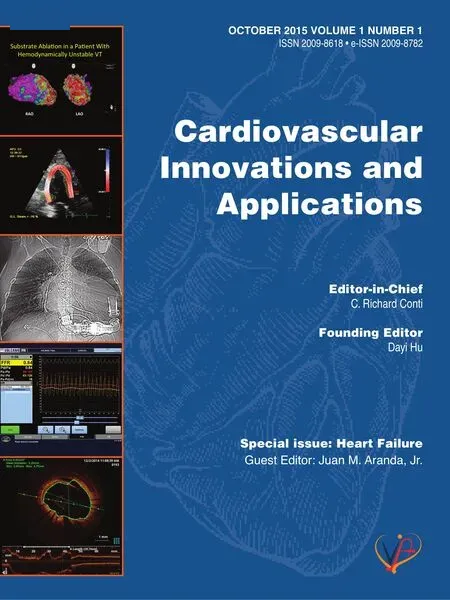A Clinician’s Commentary on Heart Failure Treatment in the Future
Standard Therapy for Heart Failure
Until now the principal focus of heart failure therapy has been on the sympathetic nervous system and the renin-angiotensin system. Beta blockade counters the unwanted effects of catecholamines on the myocardium as well as moderately reducing afterload. Since angiotensin is a vasoconstrictor and has some toxic effect on the myocardium,both contributing to heart failure, inhibition of the renin–angiotensin system has been logical therapy for heart failure. However, use of angiotensinconverting enzyme (ACE) inhibitors may increase bradykinin levels, which are responsible for the cough that may be associated with their use as well as angioedema that may result from the same medications.
A New Drug for Heart Failure
At long last a new drug for heart failure with a different mechanism of action has come on the scene to treat the heart failure patient. This new drug blocks the enzyme neprilysin, which is expressed in a variety of tissues and degrades several endogenous vasoactive (vasodilator) peptides. The inhibition of neprilysin increases the levels of these vasodilator peptides. When vasodilation occurs as a result of this new compound, bradykinin levels are not increased and thus cough and angioedema may not occur.
Paradigm-HF: A New Clinical Trial
From the clinical cardiologist perspective, I was impressed to learn of the latest heart failure trial entitled “Eff i cacy and Safety of LCZ696 Compared to Enalapril on Morbidity and Mortality of Patients with Chronic Heart Failure” (PARADIGM-HF).The drug LCZ696, now FDA approved, is a combination of the neprilysin inhibitor sacubitril with 150 mg of the angiotensin ll receptor blocker valsartan. Thus, it is the dual inhibition of angiotensin II receptor and neprilysin that may turn out to be the newest agent in many years to treat heart failure.
In this double-blind trial, 8442 patients with class II, III, or IV heart failure and an ejection fraction of 40% or less were randomly assigned to receive either LCZ696 (at a dosage of 200 mg twice daily) or the ACE inhibitor enalapril (at a dosage of 10 mg twice daily), in addition to guideline-suggested therapy.
The rationale for this trial is that neprilysin breaks down vasoactive peptides, which are vasodilators,and when neprilysin is blocked by the study compound (the neprilysin inhibitor sacubitril or enalapril), the blood levels of vasoactive (vasodilator)peptides increase. Because these vasoactive peptides are vasodilators, a signif i cant reduction in afterload results and facilitates the treatment of most heart failure patients.
I had the pleasure of attending the conference when the clinical trial was presented: the European Society of Cardiology annual meeting in 2014 in Barcelona.
Outcomes for Paradigm-HF
The primary outcome measures for this trial were the time to first occurrence of the composite end point, defined as either cardiovascular death or heart failure hospitalization up to 4 years.
The secondary outcome measures were as follows:
· Change in the clinical heart failure symptoms and physical limitations up to 4 years. This outcome is often brushed aside as a soft outcome but it is quite important to the patient with heart failure
· Time to all-cause death up to 4 years.
The results of the Paradigm-HF study showed a reduction in heart failure mortality when LCZ696 was used. The addition of valsartan seems to enhance the effects of the neprilysin inhibition. In the trial, LCZ696 at 200 mg twice daily was compared with enalapril at 10 mg twice daily (the control group). The data from Paradigm-HF also demonstrated a reduction of the composite end point of heart failure, hospitalization, and death from about 16.5% to 13.3% over a 27-month period. The safety data monitoring committee recommended that the trial end 7 months early.
Clinical Relevance of Paradigm-HF
The data were considered statistically signif i -cant and clinically relevant and have stimulated clinical investigators to reassess the use of ACE inhibitors as a first-line therapy in patients with heart failure. After randomization, patients in the LCZ696 group were likelier than those in the enalapril group to have symptomatic hypotension,but these events rarely required the discontinuation of treatment.
Despite a rather small decrease in the absolute composite end point (3.2%), a second report from Paradigm-HF, presented at the American Heart Association meetings in November 2014, demonstrated a signif i cant improvement in quality of life in the patients treated with LCZ696. The 3.2% decrease in the composite end point represents a 20% relative reduction in cardiovascular mortality in patients receiving“optimal heart failure therapy.” Hospitalization for heart failure showed a 21% relative reduction.
Conclusion and Take-Home Message
Because this new approach with LCZ696 (now called Entresto) has FDA approval, as of July 7,2015, there may be a gradual shift away from ACE inhibitors to the new compound, but I doubt that beta blockers will be excluded from the management strategy.
Conflict of interest
The author declares no conflict of interest.
Funding
This research received no specific grant from any funding agency in the public, commercial or notfor-profit sectors.
 Cardiovascular Innovations and Applications2015年4期
Cardiovascular Innovations and Applications2015年4期
- Cardiovascular Innovations and Applications的其它文章
- Mechanical Circulatory Support for the Failing Heart: Which Device to Choose
- Continuous Flow Left Ventricular Assist Device Therapy: A Focused Review on Optimal Patient Selection and Long-Term Follow-up Using Echocardiography
- Cardiac Resynchronization Therapy in 2015:Lessons Learned
- Pulmonary Arterial Hypertension and the Failing Ventricle: Getting It Right
- The Evaluation of the Heart Failure Patient by Echocardiography: Time to go beyond the Ejection Fraction
- Noninvasive Hemodynamic Monitoring for Heart Failure: A New Era of Heart Failure Management
